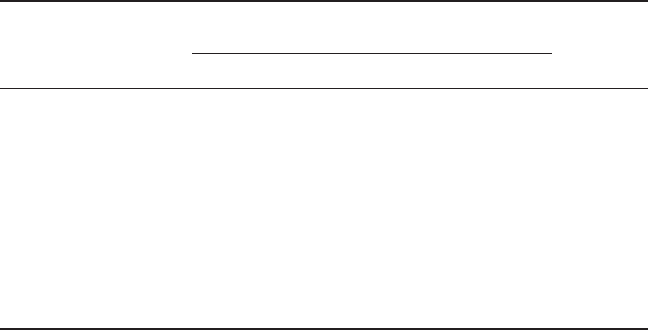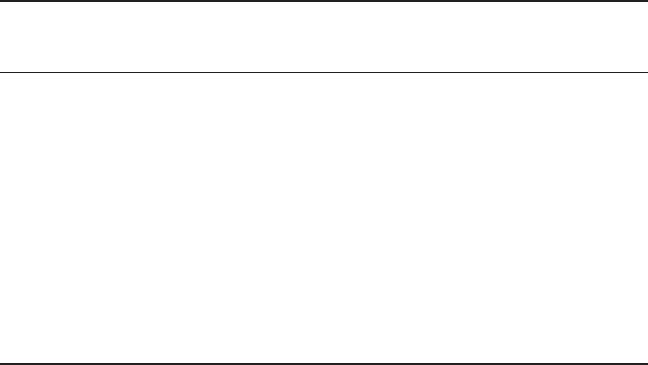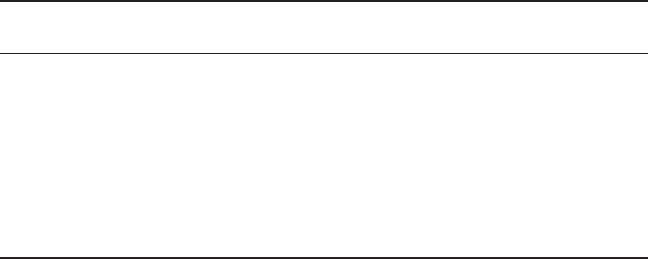Lin S.D. Water and Wastewater Calculations Manual
Подождите немного. Документ загружается.

Wastewater Engineering 735
The use of aerobic ponds is limited to warm and sunny climates, espe-
cially where a high degree of BOD removal is required but the land
area is not limited. However, very little coliform die-off occurs.
25.3 Anaerobic ponds
Anaerobic ponds are usually deep and are subjected to heavy organic
loading. There is no aerobic zone in an anaerobic pond. The depths of
anaerobic ponds usually range from 2.5 to 5 m (8 to 16 ft). The deten-
tion times are 20 to 50 days (US EPA, 1983b).
Anaerobic bacteria decompose organic matter to carbon dioxide and
methane. The principal biological reactions are acid formation and
methane fermentation. These processes are similar to those of anaero-
bic digestion of sludge. Odorous compounds, such as organic acids and
hydrogen sulfide, are also produced.
Anaerobic ponds are usually used to treat strong industrial and agri-
cultural wastes. They have been used as pretreatment to facultative or
aerobic ponds for strong industrial wastewaters and for rural commu-
nities with high organic load, such as food processing. They are not in
wide application for municipal wastewater treatment.
The advantages of anaerobic ponds compared with an aerobic treat-
ment process are low production of waste biological sludge and no need
for aeration equipment. An important disadvantage of the anaerobic
pond is the generation of odorous compounds. Its incomplete stabiliza-
tion of waste requires a second-stage aerobic process. It requires a rel-
atively high temperature for anaerobic decomposition of wastes.
Normal operation, to achieve a BOD removal efficiency of at least
75%, entails a loading rate of 0.32 kg B0D/(m
3
⭈ d) (20 lb/(1000 ft
3
⭈ d)),
a minimum detention time of 4 days, and a minimum operating tem-
perature of 24⬚C (75⬚F) (Hummer, 1986).
26 Secondary Clarifier
The secondary settling tank is an integral part of both suspended-
and attached-growth biological treatment processes. It is vital to the
operation and performance of the activated-sludge process. The clar-
ifier separates MLSS from the treated wastewater prior to discharge.
It thickens the MLSS before their turn in the aeration tank or their
wasting.
Secondary clarifiers are generally classified as Type 3 settling. Types
1 and 2 may also occur. The sloughed-off solids are commonly well-
oxidized particles that settle readily. On the other hand, greater viability
of activated sludge results in lighter, more buoyant flocs, with reduced
settling velocities. In addition, this is the result of microbial production
of gas bubbles that buoy up the tiny biological clusters.

736 Chapter 6
TABLE 6.19 Typical Design Parameters for Secondary Sedimentation Tanks
Hydraulic loading Solids loading,*
gal/(d ⭈ ft
2
)† lb solids/(d ⭈ ft
2
)†
Type of treatment Average Peak Average Peak Depth, ft
Settling following 400–600 1000–2000 _ _ 10–12
tracking filtration
Settling following 400–800 1000–1200 20–30 50 12–15
air activated
sludge (excluding
extended aeration)
Settling following 200–400 800 20–30 50 12–15
extended aeration
Settling following 400–800 1000–1200 25–35 50 12–15
oxygen activated
sludge with primary
settling
* Allowable solids loading are generally governed by sludge thickening characteristics
associated with cold weather operations.
† gal/(d ⭈ ft
2
) ⫻ 0.0407 ⫽ m
3
/(m
2
⭈ d)
lb/(d ⭈ ft
2
) ⫻ 4.8827 ⫽ kg/(d ⭈ m
2
)
SOURCE: US EPA (1975a)
26.1 Basin sizing for attached-growth
biological treatment effluent
The Ten States Standards (GLUMRB, 1996) recommends that surface
overflow rate for the settling tank following trickling filter should not
exceed 1200 gal/(d ⭈ ft
2
) (49 m
3
/(m
3
⭈ d)) based on design peak hourly flow.
In practice, typical overflow rates are 600 gal/(d ⭈ ft
2
) (24.4 m
3
/(m
2
⭈ d)) for
plants smaller than 1 Mgal/d (3785 m
3
/d) and 800 gal/(d ⭈ ft
2
) (33 m
3
/(m
2
⭈ d))
for larger plants. The minimum side water depth is 10 ft (3 m) with
greater depths for larger diameter basins. The retention time in the sec-
ondary settling tank is in the range of 2 to 3 h. The maximum recom-
mended weir loading rate is 20,000 gal/(d ⭈ ft) (250 m
3
/(d ⭈ m)) for plants
equal or less than 1 Mgal/d and 30,000 gal/(d ⭈ ft) (373 m
3
/(d ⭈ m)) for plants
greater than 1 Mgal/d (3785 m
3
/d).
Secondary clarifiers following trickling filters are usually sized on the
basis of the hydraulic loading rate. Typical design parameters for sec-
ondary clarifiers are listed in Table 6.19 (US EPA, 1975a). Referring to the
hydraulic loading rates from Table 6.20, sizing should be calculated for both
peak and design average flow conditions and the largest value calculated
should be used. At the selected hydraulic loading rates, settled effluent
quality is limited primarily by the performance of the biological reactor,
not of the settling basins. Solids loading limits are not involved in the size
of clarifiers following trickling filters. Where further treatment follows the
clarifier, cost optimization may be considered in sizing the settling basins.

Wastewater Engineering 737
Example 1: A trickling filter plant treats a flow of 1.0 Mgal/d (3785 m
3
/d) with
a raw wastewater BOD
5
of 200 mg/L and total suspended solids of 240 mg/L.
Estimate the daily solids production of the plant assuming that the primary
clarifiers remove 32% of the BOD
5
and 65% of TSS.
solution:
Step 1. Calculate the BOD
5
loading to the secondary clarifiers
BOD
5
⫽ (1 – 0.32) ⫻ (200 mg/L) ⫻ 1.0 Mgal/d ⫻ 8.34 lb/(Mgal ⭈ mg/L)
⫽ 1134 lb/d (⫽515 kg/d)
Step 2. Estimate solids (S
2
) production of the secondary clarifiers
Note: The biological solids generated in secondary treatment range from 0.4
to 0.5 lb per lb (kg/kg) BOD
5
applied. Use 0.45 lb/lb in this example.
S
2
⫽ 0.45 lb/lb ⫻ 1134 lb/d
⫽ 510 lb/d (⫽ 32 kg/d)
Step 3. Estimate solids (S
1
) generated from the primary clarifiers
S
1
⫽ 0.65 ⫻ (240 mg/L) ⫻ 1.0 Mgal/d ⫻ 8.34 lb/(Mgal ⭈ mg/L)
⫽ 1300 lb/d (⫽ 590 kg/d)
TABLE 6.20 Recommended Design Overflow Rate and Peak Solids Loading Rate for
Secondary Settling Tanks Following Activated-Sludge Processes
Surface loading at design
peak hourly flow,* Peak solids loading rate,‡
Treatment process gal/(d ⭈ ft
2
) (m
3
⭈ m
2
⭈ d) lb/(d ⭈ ft
2
) (kg/(d ⭈ m
2
)
Conventional 1200 (49) 50 (244)
Step aeration or
Complete mix 1000 (41)†
Contact stabilization
Carbonaceous state of
separate-stage
nitrification
Extended aeration 1000 (41) 35 (171)
Single-stage nitrification
Two-stage nitrification 800 (33) 35 (171)
Activated sludge with 900 (37)§ as above
chemical addition to
mixed liquor for
phosphorus removal
*Based on influent flow only.
†Computed on the basis of design maximum daily flow rate plus design maximum return
sludge rate requirement, and the design MLSS under aeration.
‡
For plant effluent ⱕ 20 mg/L.
§When effluent P concentration of 1.0 mg/L or less is required.
SOURCE: GLUMRB (1996)

738 Chapter 6
Step 4. Calculate the total daily solids production (S)
S ⫽ S
1
⫹ S
2
⫽ 1300 lb/d ⫹ 510 lb/d
⫽ 1810 lb/d (⫽ 822 kg/d)
Or solve this problem using SI units
Step 1. Calculate the BOD
5
loading to the secondary clarifiers
BOD
5
⫽ (1 – 0.32) ⫻ (200 mg/L) ⫻ (3785 m
3
/d) ⫻ 0.001 [(kg/m
3
)/(mg/L)]
⫽ 515 kg/d (⫽ 1134 lb/d)
Step 2. Estimate solids (S
2
) production of the secondary clarifiers
Note: The biological solids generated in secondary treatment range from 0.4
to 0.5 lb per lb (kg/kg) BOD
5
applied. Use 0.45 kg/kg in this example.
S
2
⫽ 0.45 kg/kg ⫻ 515 kg/d
⫽ 232 kg/d (⫽ 510 lb/d)
Step 3. Estimate solids (S
1
) generated from the primary clarifiers
S
1
⫽ 0.65 ⫻ (240 mg/L) ⫻ 3785 m
3
/d ⫻ 0.001 [(kg/m
3
)/(mg/L)]
⫽ 590 kg/d ⫽ (1300 lb/d)
Step 4. Calculate the total daily solids production (S)
S ⫽ S
1
⫹ S
2
⫽ 590 kg/d ⫹ 232 kg/d
⫽ 822 kg/d (⫽ 1810 lb/d)
Example 2: Design a two-stage trickling filter system with a design average
flow of 5680 m
3
/d (1.5 Mgal/d) and intermediate and secondary settling tanks
under conditions given as follows. The primary effluent (system influent)
BOD ⫽ 190 mg/L. The design BOD loading rate is 1.5 kg/(m
3
⭈ d) (93.8 lb/(1000
ft
3
⭈ d)).
The recycle ratio of both filters is 0.8. Both clarifiers have 20% recycled to the
influent.
solution:
Step 1. Determine volume required for the filters (plastic media)
Volume of each filter ⫽ 360 m
3
5 719 m
3
Volume 5
5680 m
3
/d 3 0.19 kg/m
3
1.5 kg/sm
3
#
dd

Wastewater Engineering 739
Step 2. Determine surface area of the filter
Use side water depth of 4 m (13 ft) since minimum depth is 3 m.
Area ⫽ 360 m
3
/4 m ⫽ 90 m
2
Diameter ⫽ (4 ⫻ 90 m
2
/3.14)
0.5
⫽ 10.7 m
⫽ 35 ft
Step 3. Check hydraulic loading rate
HRT ⫽ (5680 m
3
/d)(l ⫹ 0.8)/90 m
2
⫽ 113.6 m
3
/(m
2
⭈ d) (OK, ⬍375m
3
/(m
2
⭈ d))
Use 4 m (13 ft) deep filters with 90 m
2
(970 ft
2
) area.
Step 4. Sizing for the intermediate clarifier
Use HLR ⫽ 41 m
3
/(m
2
⭈ d) (1000 gal/(d ⭈ ft
2
)) and minimum depth of 3 m (10 ft)
Diameter ⫽ (4 ⫻ 166 m
2
/3.14)
1/2
⫽ 14.6 m
⫽ 48 ft
Step 5. Sizing for the secondary clarifier
Using HLR ⫽ 31 m
3
/(m
2
⭈ d) (760 gal/(d ⭈ ft
2
)) and minimum depth of 3 m (10 ft)
Diameter ⫽ (4 ⫻ 220 m
2
/3.14)
1/2
⫽ 16.7 m
⫽ 55 ft
26.2 Basin sizing for suspended-growth
biological treatment
In order to produce the proper concentration of return sludge, activated-
sludge settling tanks must be designed to meet thickening as well as sep-
aration requirements. Since the rate of recirculation of RAS from the
secondary settling tanks to the aeration or reaeration basins is quite
5 220 m
2
Area required 5
5680 m
3
/d 3 1.2
31 m
3
/sm
2
#
dd
5 166 m
2
Area required 5
5680 m
3
/d 3 1.2
41 m
3
/sm
2
#
dd
740 Chapter 6
high in activated-sludge processes, their surface overflow rate and weir
overflow rate should be adjusted for the various modified processes to
minimize the problems with sludge loadings, density currents, inlet
hydraulic turbulence, and occasional poor sludge settle-ability. The size
of the secondary settling tank must be based on the large surface area
determined for surface overflow rate and solids loading rate. Table 6.20
presents the design criteria for secondary clarifiers following activated-
sludge processes (GLUMRB, 1996). The values given in Tables 6.19 and
6.20 are comparable.
Solids loading rate is of primary importance to insure adequate func-
tion in the secondary settling tanks following aeration basins. In practice,
most domestic wastewater plants have values of solids volume index in
the range of 100 to 250 mg/L (WEF and ASCE, 1991a). Detail discussions
of the secondary clarifier can be found in this manual. Most design engi-
neers prefer to keep the maximum solids loading rates in the range of
4 to 6 kg/(m
2
⭈ h) (20 to 30 lb/(d ⭈ ft
2
)). Solids loadings rates of 10 kg/(m
2
⭈ h)
(50 lb/(d ⭈ ft
2
) or more have been found in some well-operating plants.
The maximum allowable hydraulic loading rate HLR as a function of
the initial settling velocity ISV at the design MLSS concentration was
proposed by Wilson and Lee (1982). The equation is expressed as follows:
(6.151)
where HRT ⫽ hydraulic retention time, h
Q ⫽ limiting hydraulic capacity, m
3
/d
A ⫽ area of the clarifier, m
2
24 ⫽ unit conversion factor, 24 h/d
ISV ⫽ initial settling velocity at the design MLSS
concentration, m/h
CSF ⫽ clarifier safety factor, 1.5 to 3, typically 2
The values of ISV change with MLSS concentrations and other condi-
tions. Batch-settling analyses should be performed. The maximum antic-
ipated operational MLSS or the corresponding minimum ISV should be
used in Eq. (6.151).
Numerous state regulations limit the maximum allowable weir load-
ing rates to 124 m
3
/(d ⭈ m) (10,000 gal/(d ⭈ ft)) for small plants (less than
3785 m
3
/d or 1 Mgal/d) and to 186 m
3
/(d ⭈ m) (15,000 gal/(d ⭈ ft)) for larger
treatment plants (WEF and ASCE, 1991a). It is a general consensus that
substantially high weir loading rates will not impair performance.
The depth of secondary clarifiers is commonly designed as 4 to 5 m
(13 to 16 ft). The deeper tanks increase TSS removal and RAS concen-
tration as well as costs. Typically, the larger the tank diameter, the
deeper the sidewall depth. The shapes of settling tanks include rectan-
gular, circular, and square. A design example of a secondary clarifier
HRT 5 Q/A 5 24 3 ISV/CSF

Wastewater Engineering 741
following the activated-sludge process is given previously in section
21.5, Example 1B.
Example: Determine the size of three identical secondary settling tanks for
an activated-sludge process with a recycle rate of 25%, an MLSS concentra-
tion of 3600 mg/L, an average design flow of 22,710 m
3
/d (6 Mgal/d), and an
anticipated peak hourly flow of 53,000 m
3
/d (14 Mgal/d). Use solids loading
rates of 4.0 and 10.0 kg/(m
2
⭈ h) for average and peak flow respectively.
solution:
Step 1. Compute the peak solids loading
3600 mg/L ⫽ 3600 g/m
3
⫽ 3.6 kg/m
3
Loading ⫽ 53,000 m
3
/d ⫻ 3.6 kg/m
3
⫻ 1.25
⫽ 238,500 kg/d
Step 2. Compute the design average solids loading
Loading ⫽ 22,710 m
3
/d ⫻ 3.6 kg/m
3
⫻ 1.25
⫽ 102,200 kg/d
Step 3. Compute the surface area required (each of three)
(a) At design flow
(b) At peak flow
A ⫽ 238,500/(10.0 ⫻ 24 ⫻ 3)
⫽ 331 m
2
⫽ 3563 ft
2
The design flow is the controlling factor; and the required surface area A ⫽
355 m
2
.
Step 3. Determine the diameter of circular clarifiers
d
2
⫽ 4A/p ⫽ 4 ⫻ 355 m
2
/3.14
d ⫽ 21.3 m
⫽ 70 ft
Use sidewall depth of 4 m (13 ft) for the tank diameter of 21 to 30 m (70 to
100
ft).
5 3820 ft
2
5 355 m
2
A 5
102,200 kg/d
4.0 kg/ sm
2
#
hd 3 24 h/d 3 3 sunitsd
742 Chapter 6
Step 4. Check hydraulic loading rate at the design flow
HLR ⫽ (22,710 m
3
/d)/(3 ⫻ 355 m
2
)
⫽ 21.3 m
3
/(m
2
⭈ d)
Step 5. Check HLR at the peak flow
HLR ⫽ (53,000 m
3
/d)/(3 ⫻ 355 m
2
)
⫽ 49.8 m
3
/(m
2
⭈ d)
(It is slightly over the limit of 49 m
3
/(m
2
⭈ d); see Table 6.20.)
Step 6. Compute the weir loading rate
Perimeter ⫽ pd ⫽ 3.14 ⫻ 21.3 m
⫽ 66.9 m
At average design flow
Weir loading ⫽ (22,710 m
3
/d)/(66.9 m ⫻ 3)
⫽ 113 m
3
/(m ⭈ d) (OK, ⬍ 125 m
3
/m ⭈ d limit)
At the peak flow
Weir loading ⫽ (53,000 m
3
/d)/(66.9 m ⫻ 3)
⫽ 264 m
3
/(m ⭈ d)
27 Effluent Disinfection
Effluent disinfection is the last treatment step of a secondary or terti-
ary treatment process. Disinfection is a chemical treatment method
carried out by adding the selected disinfectant to an effluent to destroy
or inactivate the disease-causing organisms. The purposes of effluent
disinfection are to protect public health by killing or inactivating path-
ogenic organisms such as enteric bacteria, viruses, and protozoans, and
to meet the effluent discharge standards.
The disinfection agents (chemicals) include chlorine, ozone, ultraviolet
(UV) radiation, chlorine dioxide, and bromine. Design of UV irradiation
can be referred to the manufacturer or elsewhere (WEF and ASCE, 1996a).
The chlorination–dechlorination process is currently widely practiced
in the United States. Chlorine is added to a secondary effluent for a cer-
tain contact time (20 to 45 min for average flow and 15 min at peak flow),
then the effluent is dechlorinated before discharge only during warm
weather when people use water as primary contact. In the United States
most states adopt a coliform limitation of 200 fecal coliform/100 ml.

Wastewater Engineering 743
Chlorination of effluents is usually accomplished with liquid chlo-
rine. Alternative methods use calcium or sodium hypochlorite or chlo-
rine dioxide. Disinfection kinetics and chemistry of chlorination are
discussed in Chapter 5, numerous literature, and textbooks. An excel-
lent review of effluent disinfection can be found in Design Manual
(US EPA, 1986).
27.1 Chlorine dosage
If a small quantity of chlorine is added to wastewater or effluent, it will
react rapidly with reducing substances such as hydrogen sulfide and fer-
rous iron, and be destroyed. Under these conditions, there are no disin-
fection effects. If enough chlorine is added to react with all reducing
compounds, then a little more added chlorine will react with organic
materials present in wastewater and form chlororganic compounds, which
have slight disinfection activities. Again, if enough chlorine is introduced
to react with all reducing compounds and all organic materials, then a
little more chlorine added will react with ammonia or other nitrogenous
compounds to produce chloramines or other combined forms of chlorine,
which do have disinfection capabilities. Therefore chlorine dosage and
residual chlorine are very important factors of disinfection operation. In
addition to its disinfection purpose, chlorination is also applied for pre-
vention of wastewater decomposition, prechlorination of primary influent,
control of activated sludge bulking, and reduction of BOD.
Chlorinators are designed to have a capacity adequate to produce
an effluent to meet coliform density limits specified by the regulatory
agency. Usually, multiple units are installed for adequate capacity and
to prevent excessive chlorine residuals in the effluent. Table 6.21
shows the recommended chlorine dosing capacity for treating normal
TABLE 6.21 Recommended Chlorine Dosing Capacity for Various Types of Treatment
Based on Design Average Flow
Illinois EPA dosage, GLUMRB dosage,
Type of treatment mg/L mg/L
Primary settled effluent 20
Lagoon effluent (unfiltered) 20
Lagoon effluent (filtered) 10
Trickling filter plant effluent 10 10
Activated sludge plant effluent 6 8
Activated sludge plant with 4
chemical addition
Nitrified effluent 6
Filtered effluent following 4 6
mechanical biological treatment
SOURCE: Illinois EPA (1997), GLUMRBS (1996)
744 Chapter 6
domestic wastewater, based on design average flow (Illinois EPA,
1997; GLUMRB, 1996).
For small applications, 150-lb (68-kg) chlorine cylinders are typically
used where chlorine gas consumption is less than 150 lb/d. Chlorine
cylinders are stored in an upright position with adequate support brack-
ets and chains at 2/3 of cylinder height for each cylinder. For larger
applications where the average daily chlorine gas consumption is greater
than 150 lb, 1-ton (907-kg) containers are employed. Tank cars, usually
accompanied by evaporators, are used for large installations (⬎10
Mgal/d, 0.44 m
3
/s). In this case, area-wide public safety should be eval-
uated as part of the design consideration.
Example 1: Estimate a monthly supply of liquid chlorine for trickling filter
plant effluent disinfection. The design average flow of the plant is 3.0 Mgal/d
(11,360 m
3
/d).
solution:
Step 1. Find the recommended dosage
From Table 6.21, the recommended dosage for trickling filter plant effluent
is 10 mg/L.
Step 2. Compute the daily consumption
Chlorine ⫽ 3.0 Mgal/d ⫻ 10 mg/L ⫻ 8.34 lb/(Mgal ⭈ (mg/L)
⫽ 250 lb/d
The daily consumption is over 150 lb/d (68 kg/d); thus choose 1-ton (2000-lb,
907-kg) containers.
Step 3. Compute the number of 1-ton containers required for 1 month’s (M)
supply
Monthly need ⫽ 250 lb/d ⫻ 30 d/M
⫽ 7500 lb/M
The plant needs four 1-ton containers, which is enough for 1 month’s
consumption.
Example 2: Determine the feeding rate in gal/min of sodium hypochlorite
(NaOCl) solution containing 10% available chlorine. The daily chlorine dosage
for the plant is 480 kg/d (1060 lb/d).
solution:
Step 1. Calculate chlorine concentration of the solution
10% ⫽ 100,000 mg/L ⫽ 100 g/L
